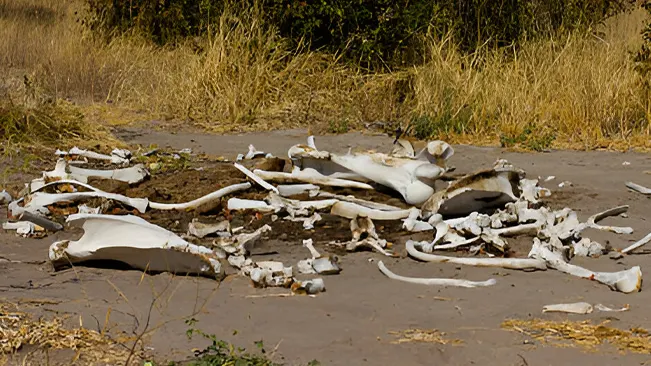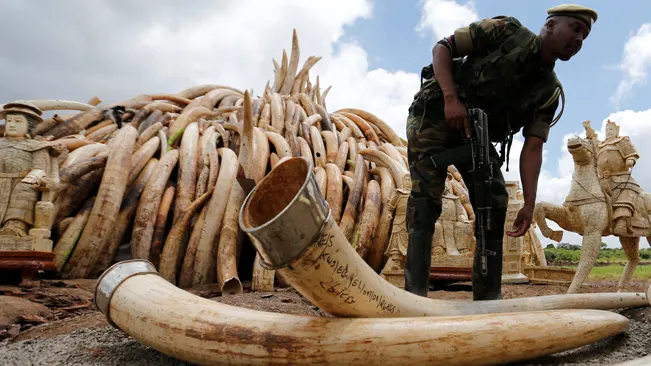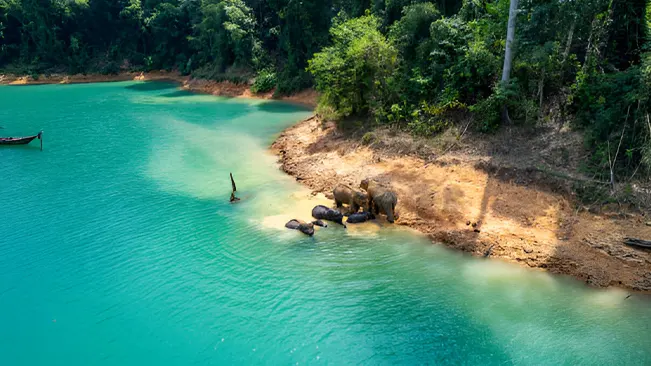Strategies for Eliminating Ivory Poaching
- August 6, 2024
- 0 comment
Ivory poaching has been a significant threat to elephant populations worldwide, leading to the decline of these majestic creatures. To combat this issue, various anti-poaching strategies have been implemented. These efforts can be broadly categorized into two main categories those targeting the actual slaughter of animals and those targeting the trade in illegal products.
Strategies Targeting the Actual Slaughter of Animals
The first category of anti-poaching policies involves measures aimed directly at the poaching of animals. These strategies.

- Anti-Poaching Patrols: Regular anti-poaching patrols are a critical component of efforts to monitor and prevent poaching activities. These patrols are typically conducted by a collaborative team of conservationists, park rangers, and local community members who are deeply invested in protecting endangered species. The presence of these patrols acts as a strong deterrent to potential poachers and allows for rapid response to any illegal activities. Equipped with advanced technology such as drones, GPS tracking, and surveillance cameras, these patrols can effectively monitor vast and often remote areas, ensuring that endangered species such as elephants are safeguarded from poachers.
- State and International Efforts: The fight against poaching is a global effort that involves both state and international organizations working in tandem. Governments of various countries, along with international entities like the Convention on International Trade in Endangered Species (CITES), collaborate to identify and track down poachers. This collaborative effort includes sharing intelligence, coordinating enforcement actions, and implementing stringent laws designed to deter poaching. International cooperation ensures that poachers and illegal traders find no safe haven, regardless of national boundaries. By fostering a network of communication and support, these efforts increase the effectiveness of anti-poaching measures and create a unified front against wildlife crime.
- Restricting Access to Vulnerable Areas: Conservation efforts also focus on restricting access to areas where elephants and other vulnerable species are at the highest risk of poaching. This strategy involves designating certain regions as off-limits to unauthorized personnel, thereby reducing the likelihood of poaching incidents. These restricted areas are often established based on scientific research that identifies critical habitats and migration routes. By limiting human intrusion, conservationists can better protect these vital areas and provide a safer environment for endangered species. Additionally, the implementation of checkpoints, barriers, and surveillance systems further ensures that these protected zones remain secure from poachers.
- Designating National Parks: One of the most effective strategies in combating poaching is the designation of national parks and other protected areas. Establishing these parks creates safe havens for elephants and other endangered species, providing them with a secure habitat free from the threat of poaching. These protected areas are typically heavily guarded and patrolled by dedicated personnel who ensure the safety of the animals. National parks also serve as important sites for conservation research and public education, raising awareness about the importance of wildlife protection. The establishment of such areas not only helps in preventing poaching but also promotes biodiversity and the preservation of natural ecosystems.
The Impact of Ivory Poaching
Illegal hunting to feed the ivory trade is an enormous threat, with some 100,000 elephants across Africa killed illegally between 2007 and 2016. This poaching crisis has led to the decline of elephant populations in many parts of Africa and Asia.

The ivory trade not only threatens the survival of elephants but also endangers the lives and livelihoods of local people and undermines national and regional security. Poaching has been linked to organized crime and armed groups, who use the profits from ivory sales to fund their activities.
Strategies Targeting the Trade in Illegal Products
The second category of anti-poaching policies focuses on reducing the demand for ivory by targeting the trade in illegal products.

- Moratorium on Ivory Trade: The Convention on International Trade in Endangered Species (CITES) has implemented a stringent moratorium on the trade of ivory. This moratorium means that international ivory trade is strictly prohibited, creating significant legal and logistical barriers for poachers attempting to sell their illegal ivory goods. By halting the legal international market, CITES reduces the opportunities for laundering illegal ivory into legitimate markets, thereby diminishing the overall incentive for poaching elephants for their tusks.
- Monitoring Ivory Exports and Imports: Governments and international organizations have established comprehensive systems to monitor ivory exports and imports rigorously. This involves tracking the movement of ivory products through meticulous documentation and reporting requirements. Enforcing strict regulations on the trade of ivory helps ensure that any illegal activities are detected and curtailed. These monitoring efforts are bolstered by technological advancements such as forensic science and DNA analysis, which aid in identifying the origins of seized ivory and linking them to specific poaching incidents.
- National Ivory Bans: In addition to international measures, many countries have implemented robust national ivory bans. These bans prohibit the domestic trade, possession, and sometimes even the display of ivory products within their borders. By removing the legal domestic market for ivory, these countries significantly reduce the demand, making ivory less attractive to both consumers and poachers. National bans are often accompanied by strict enforcement mechanisms and public awareness campaigns to ensure compliance and support from the general populace.
- Anti-Ivory Campaigns: Public awareness campaigns play a crucial role in the fight against the illegal ivory trade. Initiatives such as ivory seizure and destruction campaigns are designed to raise awareness about the severity and consequences of the illegal ivory trade. These campaigns often involve highly publicized events where seized ivory products are publicly destroyed, sending a powerful message about the commitment to eradicating this illicit trade. Such events aim to educate the public, change consumer behavior, and stigmatize the possession and trade of ivory, thereby reducing demand and discouraging poaching activities.
Changing Attitudes Toward Wildlife Products
The only sustainable solution to poaching involves changing attitudes toward the use of wildlife products. This change is likely to take time, which means that a multi-strategy approach will be critical to sustain viable elephant populations. Progress is being made in the largest market for elephant ivory, China. Policies enacted at the end of 2017 aim to eliminate all domestic processing and sale of ivory, and social media campaigns by organizations like Wild Aid are changing the attitudes of the young generation.
The Importance of Elephants
Elephants play a critical role in maintaining the ecological balance of their habitats. As ecosystem engineers, they help maintain mineral-rich clearings in the forest, on which many other species rely. They also provide a way for important soil nutrients to be spread around at a continental scale.

As seed dispersers, elephants help maintain the largest tree species, which happen to be the most important for carbon sequestration. Their presence is essential for the survival of many plant and animal species, making them a keystone species in their ecosystems.
However, the populations of all three types of elephants Asian, African forest, and African savannah are currently listed as threatened on the IUCN Red List. Between 2002 and 2013, the Central African forest elephant population dropped by 65% and its range shrank by 30%. Some populations of savannah elephants have also suffered major losses, with recent surveys showing a 60% drop in Tanzania and a 40% drop in Mozambique over the past five years.
Monitoring and Improving Information
The dearth of good information about exactly how much hunting/poaching is going on in an area, and whether existing strategies to reduce poaching are working, potentially risks pouring limited conservation dollars into less-than-effective programs. ELP addresses this issue by monitoring the actual frequency and location of gunshots in specific areas of concern. This allows for the monitoring of changes in hunting behavior across landscapes and through time.
Conclusion
The fight against poaching requires a comprehensive and multi-faceted approach that targets both the supply and demand sides of the ivory trade. By implementing effective anti-poaching strategies, changing attitudes toward wildlife products, and reducing the demand for ivory, we can make significant progress in protecting elephant populations and ensuring their survival.
However, the task is far from over. Continued efforts and collaboration between governments, NGOs, and local communities are essential to combat this pressing threat to one of the world’s most iconic species. As we work to protect elephants, we must also recognize their critical role in maintaining the health and balance of their ecosystems and the broader implications of their decline for biodiversity and the planet as a whole.
FAQs
- What is the main goal of anti-poaching strategies?
The main goal of anti-poaching strategies is to protect elephant populations by preventing poaching and reducing the demand for ivory products. - How do anti-poaching patrols work?
Anti-poaching patrols involve regular monitoring and patrolling of areas where elephants are most vulnerable to prevent poaching activities. - What is the role of international organizations in anti-poaching efforts?
International organizations like CITES play a crucial role in coordinating efforts, sharing information, and implementing strict laws to deter poaching. - How do national ivory bans work?
National ivory bans prohibit the domestic trade and possession of ivory, reducing the demand for ivory products and making it less attractive for poachers. - What is the significance of changing attitudes toward wildlife products?
Changing attitudes toward wildlife products is crucial for sustainable conservation efforts, as it reduces the demand for illegal products and supports the long-term protection of species. - How does the Elephant Listening Project contribute to anti-poaching efforts?
The Elephant Listening Project researches elephant behavior and habitat and engages in outreach activities to inform people about the importance of conservation. - What is the importance of monitoring and improving information in anti-poaching efforts?
Monitoring and improving information is essential to ensure that conservation efforts are effective and that resources are being allocated efficiently. - How do anti-poaching strategies impact local communities?
Anti-poaching strategies often involve local communities in conservation efforts, providing them with training and resources to protect their environment and livelihoods. - What are the consequences of not addressing poaching?
If poaching is not addressed, it can lead to the decline of elephant populations and the loss of biodiversity, with significant ecological and economic impacts. - What are the long-term goals of anti-poaching efforts?
The long-term goal of anti-poaching efforts is to ensure the survival of elephant populations and to protect their habitats, ultimately leading to a sustainable and healthy ecosystem.

Jack Williams
Forestry AuthorI'm Jack Williams, Jack Williams, my expertise in welding and generator technologies extends beyond traditional boundaries. With over 13 years of experience, I have honed my skills in a range of heavy-duty equipment, focusing particularly on welding and power generation. My passion for nature and commitment to ecological sustainability inform my approach to work. I emphasize safety, efficiency, and staying current with technological advancements. Beyond my technical skills, I am dedicated to sharing knowledge and fostering environmental awareness, aiming to contribute positively to both the welding and generator operation industries.







Leave your comment